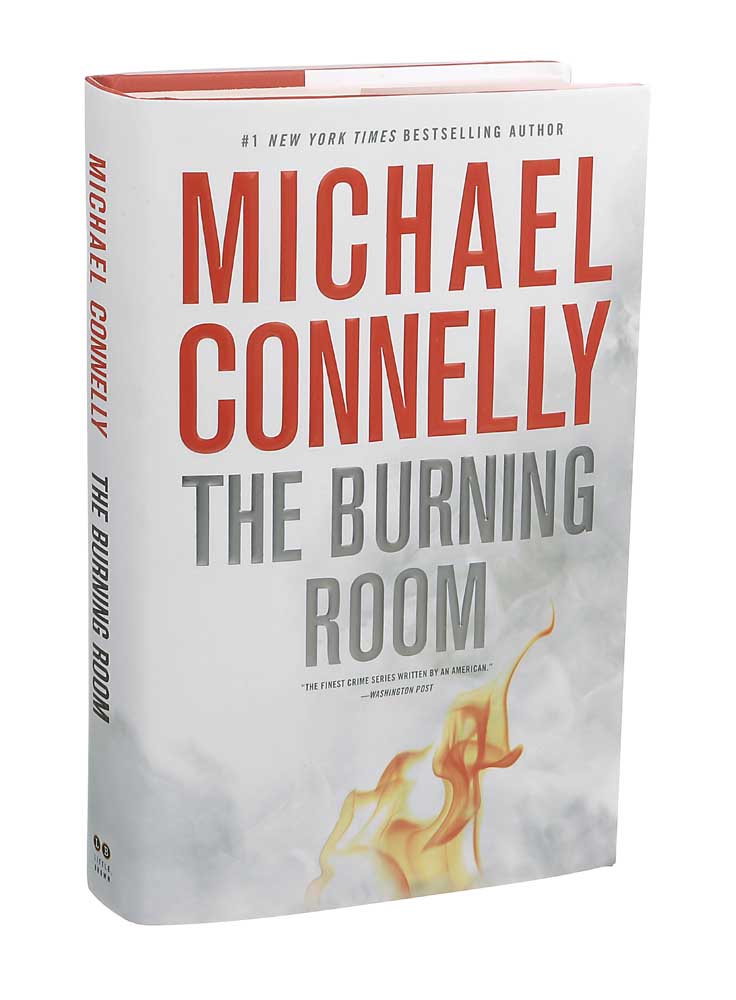Best Bosch book in years
Published 12:00 am Sunday, November 30, 2014

- (Sonny Figueroa/The New York Times)The cover of “The Burning Room” written by Michael Connelly and published by Little, Brown & Company in New York, Nov. 20, 2014. Connelly’s credentials for creating elaborate, original crime scenarios have evolved, as demands of storytelling on screen seem to have sped up and streamlined his work on the page.
“The Burning Room” by Michael Connelly (Little, Brown and Co., 388 pages)
Michael Connelly’s Harry Bosch series has its highs and lows, but the latest installment is perched on a hilltop. “The Burning Room” is the best Bosch book in years, not only because of its sharp dialogue and fast-paced detective wizardry, but also because it neither dawdles nor lets Harry get moody. Among the things that Harry, the Los Angeles Police Department’s ace antihero, hasn’t time for here: moping about his exes, worrying about his daughter, broodily listening to jazz in the wee hours or fretting about the threat of retirement, which has hovered over him for quite a while now. “The Burning Room” finds Harry in his highest gear, making every minute of police work count.
Trending
And it gives him just the kind of crazily convoluted case that fans of detective fiction love. Harry’s beat these days is the Open-Unsolved Unit, which usually involves murder victims who have been dead a long time. But the book begins with the fresh corpse of a mariachi guitarist whose wound was inflicted 10 years earlier. We are in the autopsy room as this curiosity unfolds, and Harry, having been around the block so many times, long ago had an affair with the coroner, Corazon. A little unseemly flirting goes on between them as she extracts a bullet from the spine of the dead man, Orlando Merced, and pronounces the crime “a 10-year murder.”
Connelly’s credentials for creating elaborate, original crime scenarios have evolved gracefully. When he introduced Harry in “The Black Echo” (1992), he had a background as a crime beat reporter and a familiarity with police lingo and tactics of that time. Since then, he has closely followed advances in forensics and technology and kept up with changes in journalism and law enforcement.
There’s also a film component: Some of his books have been filmed, most notably “The Lincoln Lawyer” (2011), which was an early harbinger of the news that Matthew McConaughey wasn’t washed up after all. Soon Harry will star in his own 10-part Amazon Instant Video series that Connelly created, adapted from his novels “The Concrete Blonde,” “City of Bones” and “Echo Park.” The demands of storytelling on screen seem to have sped up and streamlined his work on the page.
Back to that new-old corpse: The mariachi man is only incidental, of course. Harry and his hardworking new partner, Lucia Soto, are quick to figure that out. The shooting took place in a crowded plaza, and even 10 years ago, there was surveillance footage. Who is the member of the mariachi band who knew the shots were coming and can be seen on camera dodging to get out of their way?
And so, a nicely complicated game of connect the dots begins. The detectives initiate a set of steps that keep them on the move — no slow stakeouts here — as they string together seemingly unrelated events that are, of course, interwoven. One of the pleasures of reading “The Burning Room” is the way that Connelly sneaks minor details past the reader, only to implement them later in the game.
Harry remarks at one point that crime movies and novels strike him as fake: They rely on the premise that criminals are rational and that their behavior always adds up. In Harry’s world, he thinks, life doesn’t work that way. But it does, at least in this book. There’s a reason for everything, starting with why Lucy Soto wanted to join the Police Department. She was raised in the Bonnie Brae apartment complex, where the children’s day care center was in the basement. She survived a 1993 fire that started at the bottom of the building’s trash chutes, but nine other children did not.
Trending
The Bonnie Brae case was deemed arson but dismissed as an act of gang-related violence. Harry picks up on the fact that it occurred almost simultaneously with an armed robbery at a check-cashing place blocks away. And the wounded mariachi player, shot 10 years later, ties in, too. Throw in about 50 minor characters, each of whom supplies one big, whopping clue or piece of corroboration, and you begin to see how this book can keep a reader flapping pages deep into the night.
Of course, Harry wouldn’t be Harry without a beef or two. It’s a tossup whether he hates politicians or the money men who manipulate them more. He still dodges authority. He inveighs against corruption only sparingly, because he’s so blessedly busy.
But there’s usually a screed boiling up inside him, and here’s the only one the book has time for: “The good ones all had that hollow space inside. The empty place where the fire always burns. For something. Call it justice. Call it the need to know. Call it the need to believe that those who are evil will not remain hidden in darkness forever.” That’s just the right amount for a writer who has delivered reams of verbiage along these same lines.








